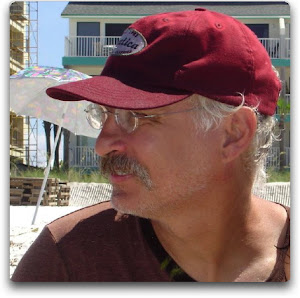The philosopher Martin Heidegger reasoned in his treatise "Sein und Zeit" that our sense of time confers our sense of being (Heidegger, 1976). Henry Gustav Molaison could attest to that. In order to relieve Henry from severe bouts of epileptic seizures, a part of his temporal lobes had been removed when he was in his late twenties.
The seizures subsided. However, as an unwanted consequence of the surgery, he had lost essential elements of his memory. He could not remember who he was and had to discover his identity anew every day. One day late in his adult life, Henry was caught curiously examining his face in a mirror. He called out in amazement, "I am not a boy!" In Heidegger's words, Henry Molaison had lost his sense of time and, with that, his sense of being.
As patient H.M., Henry volunteered for scientific research throughout his life, becoming one of the most intensely examined cases in psychology. He willed his brain to research. Yesterday a year ago, he passed away of respiratory complications at the age of 82. On the first anniversary of his passing, the histological processing of his brain was begun at the University of California San Diego. The university's Brain Observatory provides live online footage of the sectioning of the frozen whole brain on a cryotome until Dec. 4, 2009. The brain is cut coronally, that is in the transverse plane. Seventy micrometer-thin sections are collected for histology at equally-spaced intervals. At the speed maintained thus far, we shall reach the site of surgery tomorrow.
The ensuing histological examination of his brain will complete Henry's scientific journey as he willed. The findings may provide important insights into the histochemistry of memory, constituting the keystone in the arch of knowledge that H.M. allowed us to build.
Related Posts
- A Theory of Mind II: H.M.'s Memory
- The Quest for the Infrasound Acoustic Fovea
- Constantin von Monakow & Brain Plasticity
- At 5:00 am (CST), we are in the midst of the temporal lobe of H.M.'s brain. If you look closely at the bottom of the brain (ventral, on the left hand side of the observer), you see cauliflower-shaped protrusions on both sides. These are the temporal lobes. There is a void inside the structures. Parts of the hippocampus seem absent (12/04/09).
- At about noon, in section 1672 (46,344 micrometers), we can see a cavity in left lingual gyrus (in the hemisphere closest to the observer) (12/04/09).
- At 5:00 pm (CST), we are entering the occipital lobes; at 10:00 pm we passed the middle of the occipital lobes (12/04/09).
- We should be able to detect signs of nerve cell and nerve fiber degeneration in the brain regions that were connected to the brain tissue that was removed or damaged otherwise during surgery, particularly in the structures of the limbic system. Degenerating nerve fibers can be rendered decades after the damage and ameboid microglia may reside in the affected locations (Miklossy and others, 1991). According to von Monakow's concept of diaschisis, the affected regions can be far-flung and distant from the site of immediate damage, comprising the opposite cerebral and cerebellar hemispheres. That is why H.M.'s whole brain needed to be sectioned, and 2,401 sections were collected (12/05/09).
- The footage covering the sectioning does not seem to be available on The Brain Observatory's site at this time. You may find a CBS report broadcast Dec. 3, 2009, instructive (01/01/10):
- Brain sections are prepared for histology with two distinctly different methods. One way requires that the tissue is embedded in hot paraffin wax or plastic. The tissue is sectioned at room temperature on a bench top with a microtome or ultramicrotome, respectively. Paraffin embedding is widely used in routine pathology. Plastic is used to embed specimen to be cut into ultra-thin sections for electron microscopy. The other method of tissue preparation requires that the specimen are frozen. Frozen tissue has to be stored and sectioned at temperatures below 0 ℃.
With either method of preparation, the tissue is commonly first soaked in solutions of formaldehyde, glutaraldehyde or a mixture of both. The aldehydes help bond cellular protein, preserving cellular structure during the further processing steps. H.M.'s brain was then soaked in highly concentrated sucrose solutions and embedded in dextran. Sucrose and dextran are sugars. The sucrose prevents ice crystals from forming in the cells when the tissue is frozen. The growing crystals would otherwise burst the cells. The dextran helps preserve the integrity of the sections, preventing tissue from breaking off the perimeter of the specimen during cutting. Once the brain is fixed and cryo-protected, it can be cut into sections that are only tens of micrometers thick on a microtome on which only the stage holding the brain is kept at subzero temperatures. The sections are picked up from the microtome's knife with a brush and can be processed freely floating in solutions containing the substances needed for the chosen histological staining procedure.
There are numerous histological staining procedures. Most comprise chemical reactions. Others involve antibodies that bind specifically to cellular proteins or fluorescent dyes that fill particular cellular components. Among the oldest procedures is the silver impregnation method named after Camillo Golgi, rendering the cell bodies of nerve cells and a good part of their processes (dendrites) and protrusions (dendritic spines). This method helped Ramón Cajal to divide the cerebral cortex into six layers, a distinction that is still used today. Golgi and Cajal were awarded the Nobel Prize for their contributions. The most commonly employed methods, however, are the Nissl stain for cell bodies and the myelin stain that stains the fatty sheeth around nerve cell fibers in the brain's white matter. These methods will certainly be used with some sections of H.M.'s brain. After staining, the sections are mounted on glass slides, dehydrated in solutions of increasing alcohol concentration, embedded in a clear organic solvent-based glue and covered with thin glass coverslips.
The methods of tissue preparation described above cannot be used when the procedures require that fixation-sensitive cellular proteins remain functional or when water-soluble, diffusible substances are to be localized in the tissue. In that case, the tissue must remain unfixed and immersion in sucrose cannot be used. The tissue has to be shock frozen at -70 ℃ and lower, and the sections must be kept frozen during sectioning. To fulfill this need the whole microtome is encased in a refrigerated cabinet. The instrument is then called a cryostat. Ten or 20 micrometer-thick sections are cut and picked up on chilled glass slides and quickly dried on a hotplate outside the cabinet. The subsequent procedures must consequently be carried out on the slide-mounted sections. This method is used for the autoradiography of diffusible radioactively-labeled tracers. For autoradiography, the sections are exposed to x-ray films or radiation-sensitive semiconductor chips that produce gray-scale images of the distribution of the tracer in the sections. The optical densities in the images called autoradiograms are proportional to the concentration of the tracer in the tissue and can be measured.
In order to trace metabolites in whole bodies, Sven Ullberg and colleagues at Uppsala University, Sweden, engineered a microtome sufficiently sturdy to cut thin sections through the whole body of small animals. The microtome was placed it in a chest freezer with windows in the lid (Larsson and Ullberg, 1981). The instrument is called a whole-body cryotome and was commercially available from the Swedish company LKB. I was privileged to use a LKB cryotome 30 years ago for functional imaging studies (Melzer, 1984). The picture below shows a whole rat embedded length-wise in dextran and frozen in liquid nitrogen at -173 ℃. The dextran block with the rat is mounted on the sliding stage of the cryotome for sectioning.
 The block of dextran with the rat resembles that with H.M.'s brain in the footage of the Brain Observatory which misled me initially. But as I pointed out, H.M.'s brain was fixed and protected with sucrose. Only the microtome stage had to be cooled. No freezer chest was needed. Jacopo's hands stayed warm.
The block of dextran with the rat resembles that with H.M.'s brain in the footage of the Brain Observatory which misled me initially. But as I pointed out, H.M.'s brain was fixed and protected with sucrose. Only the microtome stage had to be cooled. No freezer chest was needed. Jacopo's hands stayed warm.
One great advantage of whole body sectioning is that the sections render the organs in their actual position inside the body. The picture below shows a the block surface of the head of a sandrat embedded in dextran and cut transversely at the level of the midbrain.
The structure at the center is the brain. The glassy cavities on both sides of the brain are the inner and middle ears. The middle ear cavities of sandrats are remarkably enlarged compared with other rodents, serving as a low pass filter. The animal had been exposed to sound for functional imaging. Brain activation images are shown in my post entitled "The Quest for the Infrasound Acoustic Fovea" and dated Oct. 12, 2009.
Since the brain was preserved accurately as it was situated in the scull, we were able to pinpoint brain structures with stereotaxic precision, a goal that may be achieved with structural magnetic resonance imaging today. That method did not exist then.
In addition to functional imaging, fresh tissue tissue sections permit us to examine the distribution of radioactively-labeled ligands that bind to specific receptors on cell surface or probes that identify sequences of genetic code. These procedures can not be applied to the sections of H.M.'s brain. However, even with the histological techniques available a treasure of knowledge will be uncovered from the brain that Harvey Molaison kindly willed.
In the past three decades most departments of anatomy have been transformed into departments of cell biology for good reason. However, gazing through a microscope at the multitude of diversely shaped nerve cells in a Golgi-stained section through cerebral cortex still remains as fascinating as gazing through a telescope at the myriad of stars in the night sky. The neuroanatomical methods that make this experience possible resemble in many ways forms of art, though rather of an artisan than of an artist. Perhaps, the work on Harvey's brain will rekindle interest in this type of expertise, paving the way for a renaissance of neuroanatomy (01/02/10).
- The Allen Institute for Brain Science in Seattle, WA, compiled the first comprehensive atlas of local gene expression in the mouse brain five years ago and has now released a similar atlas for the human brain (04/13/2011):
References
- Heidegger M (1976) Sein und Zeit. Max Niemeyer Verlag, Tübingen.
- Larsson B, Ullberg S (1981) Whole-body autoradiography. J Histochem Cytochem 29:216-225.
- Melzer P (1984) Whole head sectioning in [3H] deoxyglucose mapping of auditory responses in gerbils. Brain Res Bull 12:331-334.
- Miklossy J, Clarke S, Van der Loos H (1991) The long distance effects of brain lesions: visualization of axonal pathways and their terminations in the human brain by the Nauta method. J Neuropathol Exp Neurol 50:595-614.







